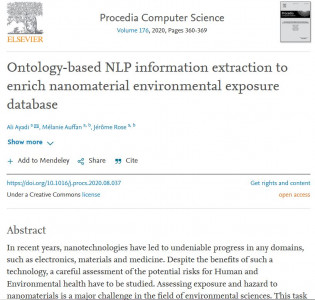Article on "Evaluation of the Dermal Toxicity of InZnP Quantum Dots Before and After Accelerated Weathering: Toward a Safer-By-Design Strategy" Dussert, F., Wegner, K. D., Moriscot, C., Gallet, B., Jouneau, P. H., Reiss, P., & Carriere, M. (2021).
Abstract:
Quantum dots (QDs) are colloidal fluorescent semiconductor nanocrystals with exceptional optical properties. Their widespread use, particularly in light-emitting diodes (LEDs), displays, and photovoltaics, is questioning their potential toxicity. The most widely used QDs are CdSe and CdTe QDs, but due to the toxicity of cadmium (Cd), their use in electrical and electronic equipment is now restricted in the European Union through the Restriction of hazardous substances in electrical and electronic equipment (RoHS) directive. This has prompted the development of safer alternatives to Cd-based QDs; among them, InP QDs are the most promising ones. We recently developed RoHS-compliant QDs with an alloyed core composed of InZnP coated with a Zn(Se,S) gradient shell, which was further coated with an additional ZnS shell to protect the QDs from oxidative surface degradation. In this study, the toxicity of single-shelled InZnP/Zn(Se,S) core/gradient shell and of double-shelled InZnP/Zn(Se,S)/ZnS core/shell/shell QDs was evaluated both in their pristine form and after aging in a climatic chamber, mimicking a realistic environmental weathering. We show that both pristine and aged QDs, whatever their composition, accumulate in the cytoplasm of human primary keratinocytes where they form agglomerates at the vicinity of the nucleus. Pristine QDs do not show overt toxicity to cells, while aged QDs show cytotoxicity and genotoxicity and significantly modulate the mRNA expression of proteins involved in zinc homeostasis, cell redox response, and inflammation. While the three aged QDs show similar toxicity, the toxicity of pristine gradient-shell QD is higher than that of pristine double-shell QD, confirming that adding a second shell is a promising safer-by-design strategy. Taken together, these results suggest that end-of-life degradation products from InP-based QDs are detrimental to skin cells in case of accidental exposure and that the mechanisms driving this effect are oxidative stress, inflammation, and disturbance of cell metal homeostasis, particularly Zn homeostasis. Further efforts to promote safer-by-design formulations of QDs, for instance by reducing the In and Zn content and/or implementing a more robust outer shell, are therefore warranted.









